I was a little disappointed that the Priory’s old and established garden only boasted one clematis. Over the last six years I have rectified that shortcoming by adding a further twenty or so and today there are almost two dozen clematis dotted about the grounds. Here are some of them.
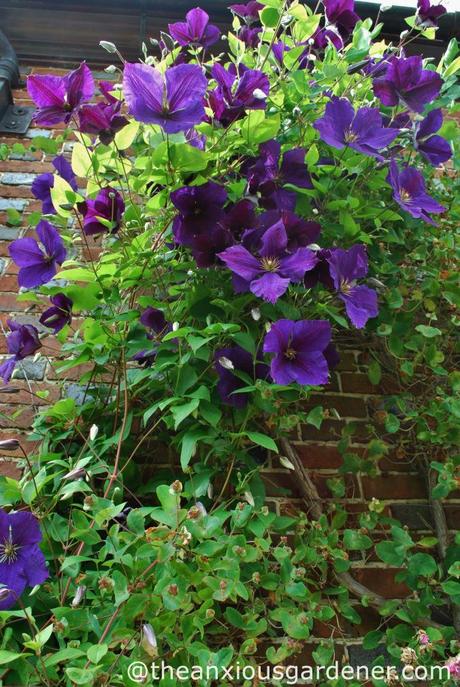
The original Priory clematis is C. Jackmanii clambering three or four metres up into an ancient honeysuckle. It looks fine against the brick walls of the house with large, four or five petalled, purple flowers appearing in mid to late summer. (It is pruning group 3. I’ve added a note about clematis pruning groups at the end of this post, if you’re interested).
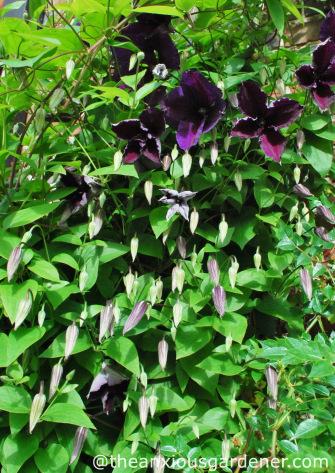
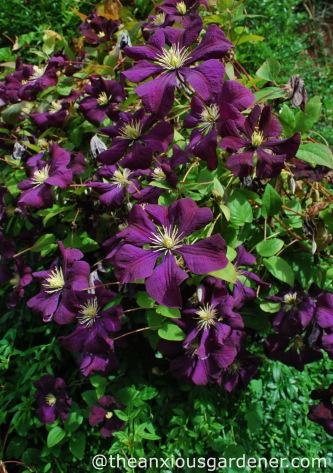
A couple of years ago, further along the same wall, and to grow up through winter jasmine, I planted C. ‘Etoile Violette’. This is a viticella hybrid – a vigorous group most of which flower for several months. (Also group 3). When I cut down the jasmine to ground level (the wall needed damp proofing), I moved ‘Etoile Violette‘ to the rose tunnel where it joined another half-dozen varieties.

July 2014
The rose tunnel – extended recently and with many of the old, rotten posts replaced – is not yet completely smothered by roses. The rose smother rate isn’t helped by regular and enthusiastic pruning by visiting deer. They are particularly partial to young, knee-high roses which they can chomp at their leisure without having to crane their necks. Clematis add a little more interest to dwarfed roses – though these too are indiscriminately deer-nibbled.

This section of the tunnel, where I’m still training the scrambling Rosa ‘Sander’s White’ has Clematis ‘Wisley’ on the left with C. ‘Warsawska Nike’ on the right. (Both group 3).
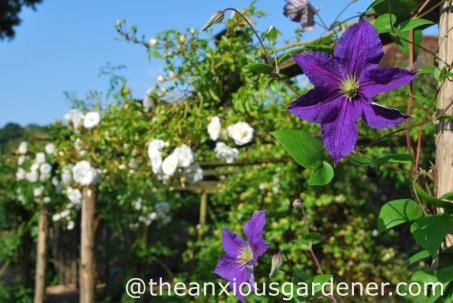




I’m very fond of ‘Wisley’ – as I am of most plants that perform really well. The blue-ish petals look good against the white of the rose and it produces a huge amount of bud.


Also on the rose tunnel is C. ‘Westerplatte’ – a strong red, that slowly unfurls its large, velvety, pale-backed flower. (Group 2).
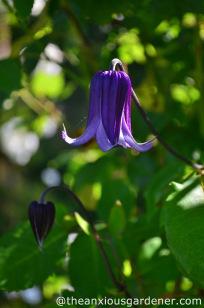
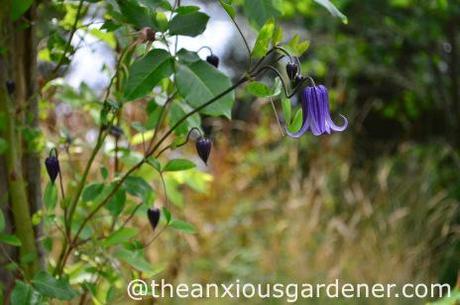
Here is a clematis which I introduced last year – C. Rooghhi. I like the pretty, nodding flowers – of which there would be plenty more if it weren’t for those sharp-toothed deer guests. (It’s Group 3).
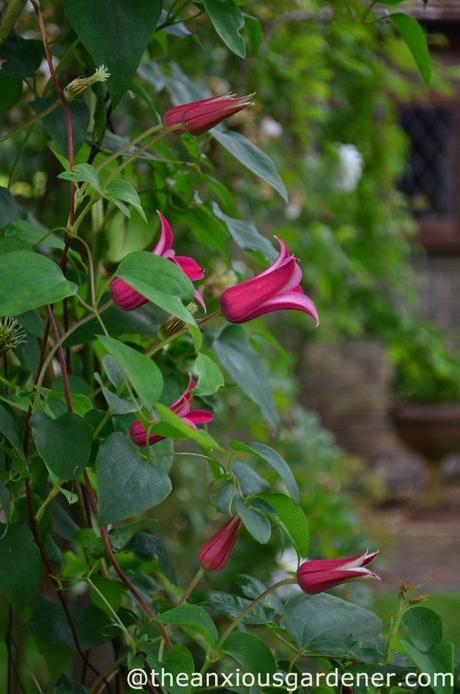
Another new introduction is a rare (for me) pink - C. ‘Princess Diana’ (Group 3).
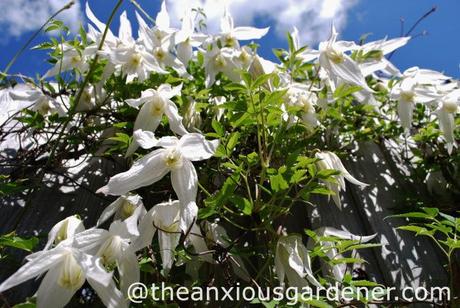
One of my favourites is C. ‘Broughton Bride’. I took this photo in my garden several years ago and left the plant behind when I moved away. I searched idly for a couple of years for one to add to the Priory. Eventually, I found ‘BB’ at my local garden centre, Paradise Park (which incidentally is neither a park nor paradise) reduced to £3. I grabbed it and rubbed my hands with glee. Dexterously tricky. That young plant has joined the rose tunnel. (Group 1).
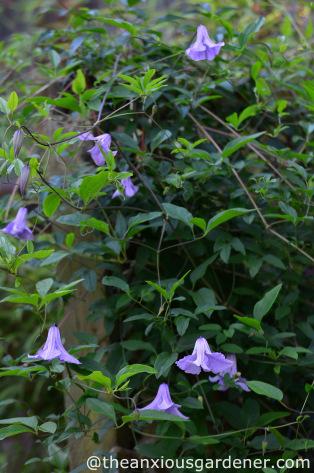
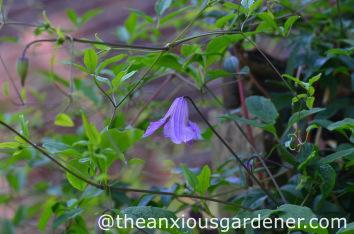
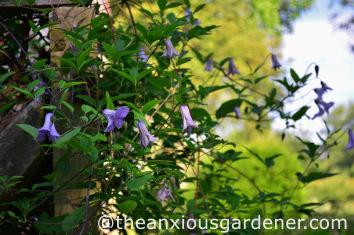
This is a pretty thing – Clematis ‘Betty Corning’. Only in her second year, she is still young and relatively small. Betty is vigorous and will grow far higher and wider in the years to come. (Deer allowing). She’s a viticella so yep, pruning group 3.
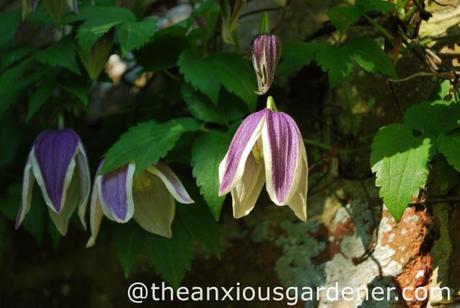
I grow some clematis on walls. I trained C. koreana ‘Blue Eclipse’ along wires and it looked jolly nice … but then died. It was one of the first plants I put in at the Priory and I hadn’t realised how, during the winter, the soil it sat in would turn to soup. Poor thing. (It was group 1).

This is another viticella, C. ‘Black Prince’ growing up a wall and over the roof of an outbuilding. It too is a young plant and hopefully will put on more of a show in the years to come.

If you have no wall or roofs to cover, you might grow a clematis up through a tree or shrub. This very tall viticella, C. ‘Kermesina’ shoots out of the top of a 12ft Osmanthus burwoodii. Rather than a single spurt, I would have preferred a more spread-out effect. Perhaps in the future.
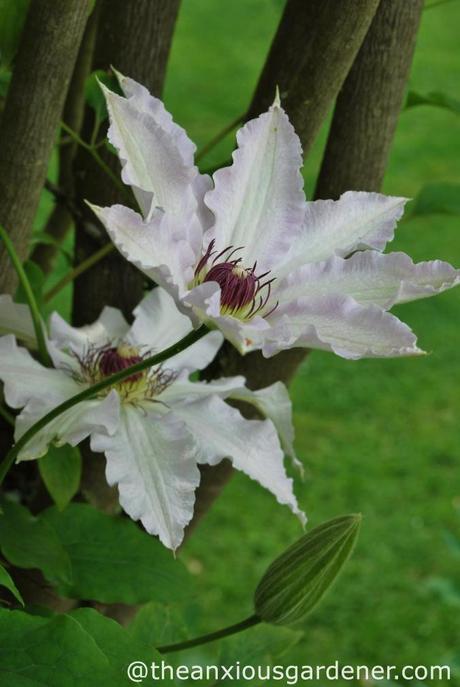
This was an unnamed gift but I’m fairly certain it is the beautiful ‘Miss Bateman’ – another favourite I left in my garden when I moved house. She is a group 2 – or at least would be were she still with us. She died.
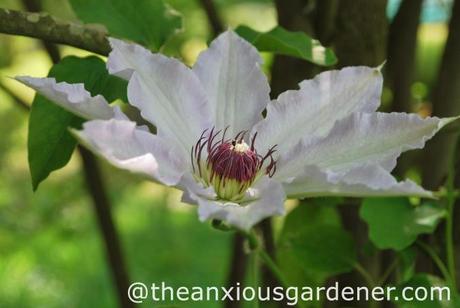
I’m not sure why she decided to leave but I suspect repeated slug damage to young shoots. I’ll buy another ‘Miss Bateman’ but plant her elsewhere. She wasn’t tall enough for the amelanchier I put her under.
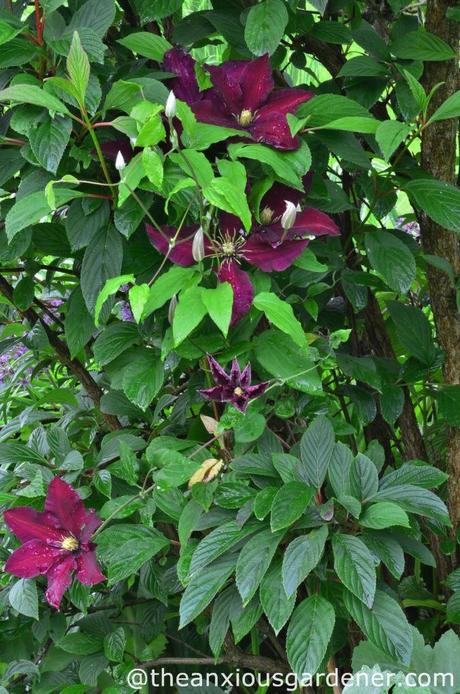
I quite like C. Niobe (group 2) but it’s also too short for this viburnum. Like Miss Bateman, Niobe reaches no taller than a metre or two. (Apparently it can grow to three metres but not in my experience).

And finally, a clematis that exceeded all my expectations is the happily named C. × triternata ‘Rubromarginata’ which I grow over a mahonia. (Group 3).

If the look alone weren’t enough it also has a superb, strong scent. Of marzipan. Quite a plant, I think. You can imagine my grief when it also died – again due to repeated slug attack. I’ve planted a replacement and during early season wet spells, guard it vigilantly against rasping molluscs.
oooOOOooo
Here’s that quick note on pruning. I think some people might be a little confused by pruning clematis but, so long as you know which group a variety belongs to, it is quite straight-forward. Make a note of the pruning group of any plant you buy – it’ll be on the label. Or look up the variety’s group online. Then all you need to do is this:
- Group 1 – flowers on previous year’s growth and needs hardly any pruning. Tidy up as necessary and reduce in size if it gets too big. If it does need hard cutting back, do so right after flowering.
- Group 2 – flowering stems produced from previous year growth. Cut back weak, damaged stems to a pair of strong buds in late winter. Tie in stems to form a framework in summer.
- Group 3 – flowers on current year’s growth. Cut stems back to a pair of strong buds in early spring, a foot or so above ground level.
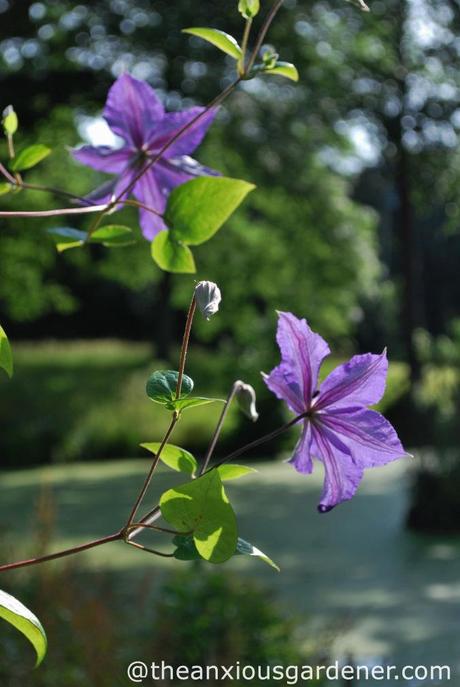
And that’s it. If you want more detail on a particular variety or group, the internet or a decent gardening book will guide you. But don’t worry too much about pruning groups and certainly don’t be put off from planting these very useful and beautiful climbers. Clematis are tough plants and won’t mind too much if you make a pruning mistake. The worst that might happen is that you’ll miss a season’s flowers. So, for example, don’t hack a Clematis montana (Group 1) back in winter or early spring. As I’ve said, they flower on the previous season’s stems – which you will have just cut off.

